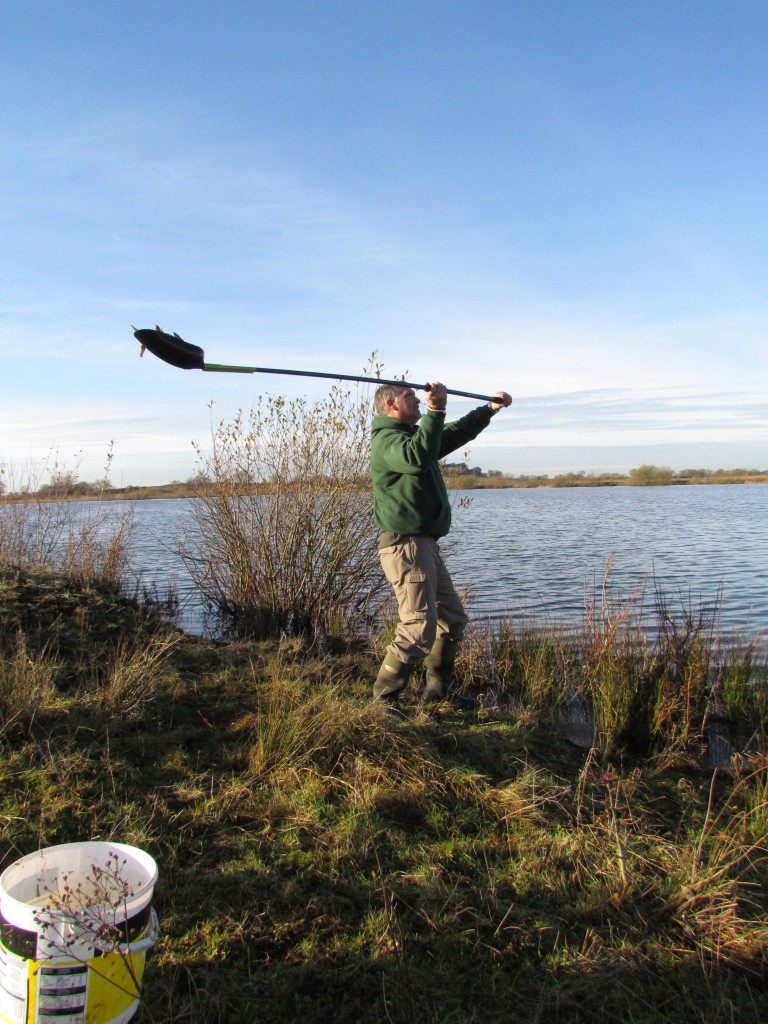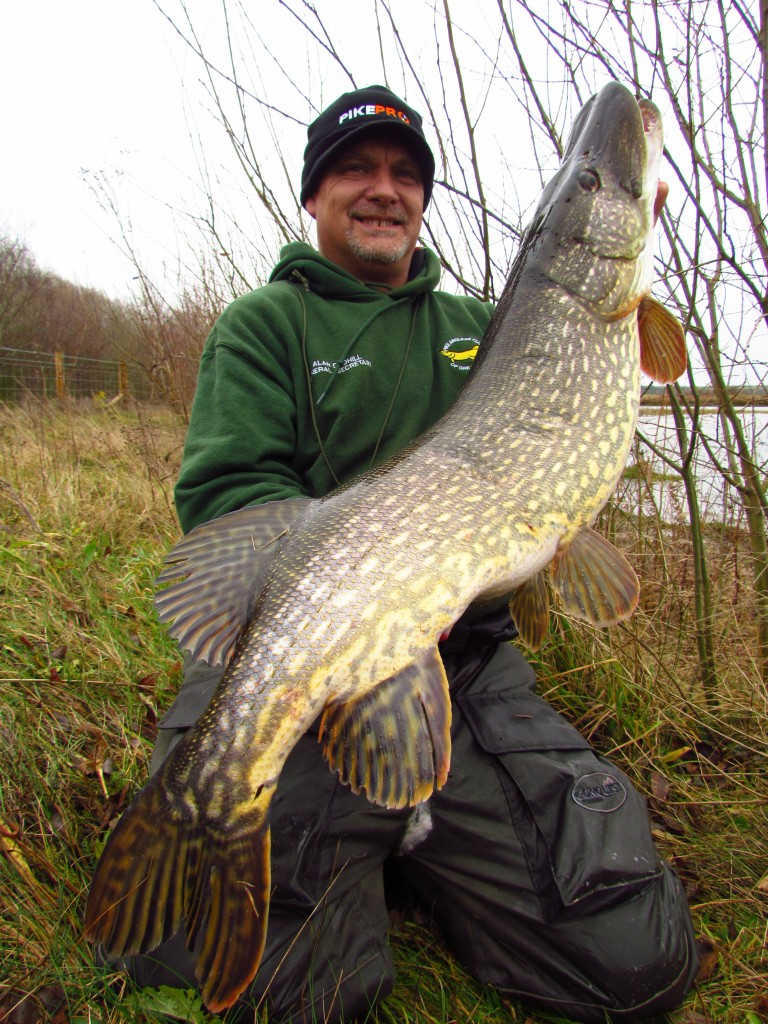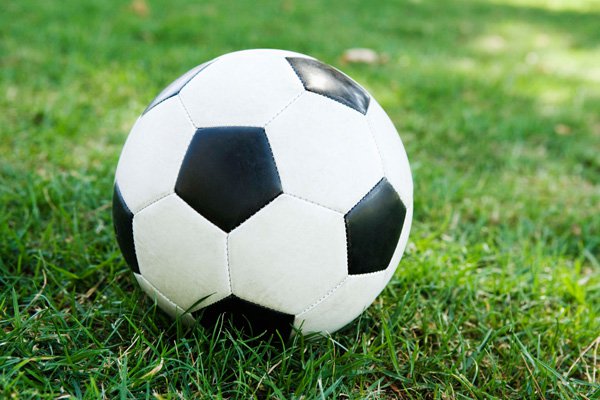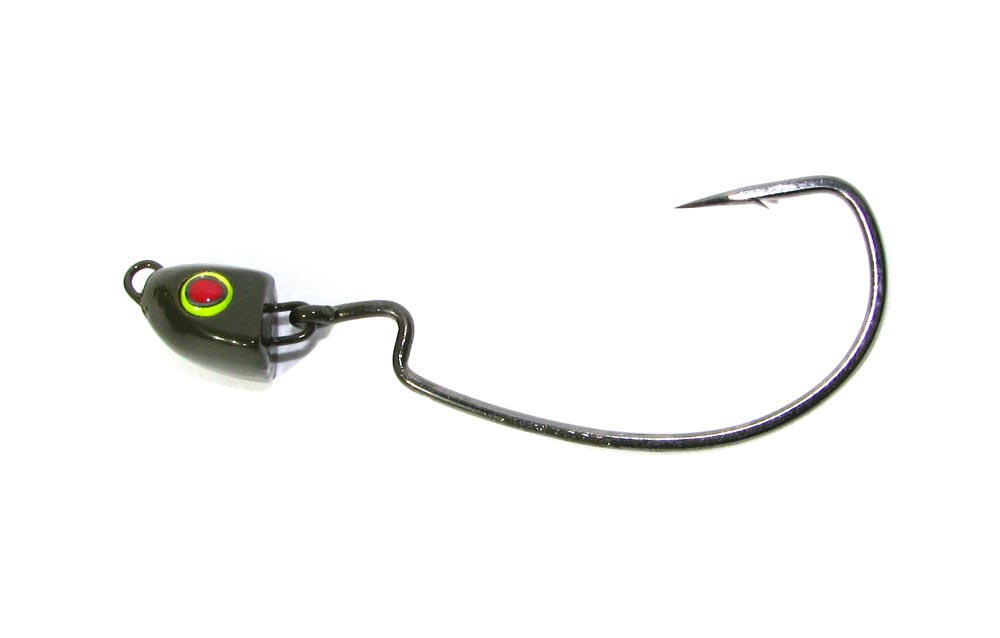TO BE successful on gravel pits you have to do your homework. Spending time plotting the topography, figuring out where the prey fish are likely to be and understanding feeding patterns.
There is however, a short cut to success – pre-baiting. By pre-baiting you are basically putting regular free offerings into the swim leading up to you fishing it. Done correctly and this will pay off.

Alan Dudhill gets stuck into some distance pre-baiting.
A few simple rules you need to follow:
• Identify a suitable swim
• Plan your pre-baiting in advance of your intended fishing date.
• Pre-bait with the same bait you intend to fish with
• Start pre-baiting a few weeks before with say a dozen or so baits and repeat this each week.
• Accurate bite indication is essential, pike will often pick up baits but not run with them
• Hit runs immediately, often pike become confident and will gulp baits
Like most pikers this season, our chocolate-coloured rivers and even canals have been rendered un-fishable, leaving the 3 Amigos (Kev Berry, Ian Cougill and Me) to resort to plan B, large gravel pits.
We’d had one in mind for quite a while so this was the perfect opportunity to dedicate some time to mastering this new water. We usually have the advantage of knowing our waters but this new 100 acre gravel pit was looking quite daunting so we went for the short cut. It wasn’t all guesswork though.
We decided to pre-bait a large area of deep water on the north bank, usually a safe bet anyway as it’s on the end of the warmer south-westerly wind and protected from the colder northerly winds.
Another factor is that as the water cools down in winter, prey fish will head to the deeper water where oxygen levels are higher. Find the prey fish and the pike will never be too far away.
Feeding grebes will also give away the location of prey fish so using a little water craft can soon put you in the right swim.
By pre-baiting a likely swim you’re hoping that the pike will eventually home in on the easy meals and they will either feed till stuffed and sit in the swim or add the swim to their regular patrol route.
This method is unlikely to give instant results but with a bit of thought, effort & plenty of patience, you’re chances of success are greatly improved.
If the water contains a good head of pike, sooner or later, it is inevitable that they will feed in the swim at the same time that you’re fishing it. Offer them the same easy meal and they’ll take it with confidence.
Fortunately our recent efforts were rewarded with some big Esox girls. We’re not missing our rivers quite as much now.

Alan Dudhill … with a pit monster
Big pike are big because they are fat & idle. They only got this way because they are not tearing around after small fry or burning off energy by fighting strong currents.
They are eating larger prey and will lie up for long periods to digest it. While laid up they will ambush other opportunist meals as they swim by. This is why big pike are often covered in leeches.
Hence why dedicated pikers often say they are fishing for a non-feeding fish, that’s secret code for ‘a big fish’.

For tips on the safe handling and unhooking of pike, and much more, visit the PAC website www.pacgb.co.uk. Better still, join online and help fight to preserve our sport for future generations. You wont just be doing your bit for pike conservation, you’ll catch far much fish too.
Exploring the Advantages of Soccer Training for Children


How to Clean and Store Baseball Gloves

Copyright © www.mycheapnfljerseys.com Outdoor sports All Rights Reserved